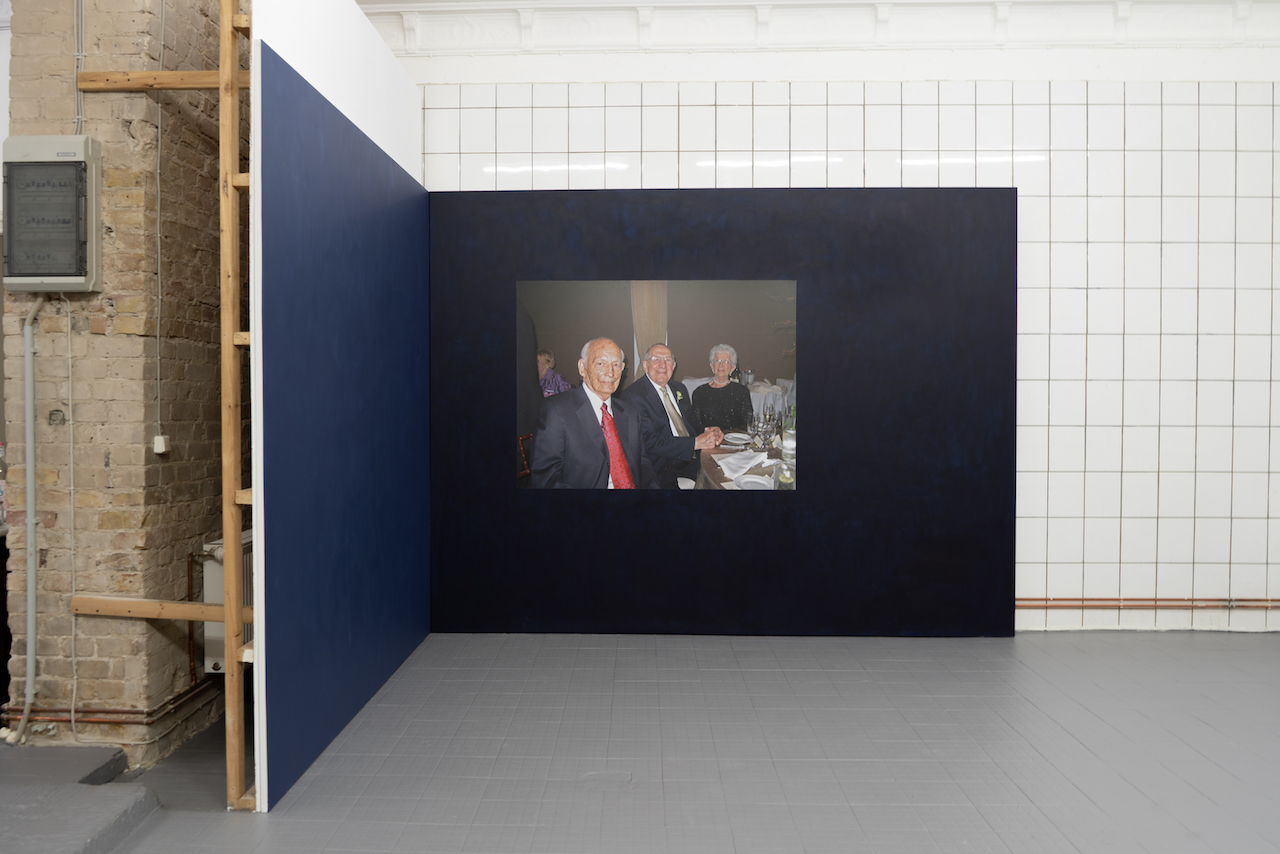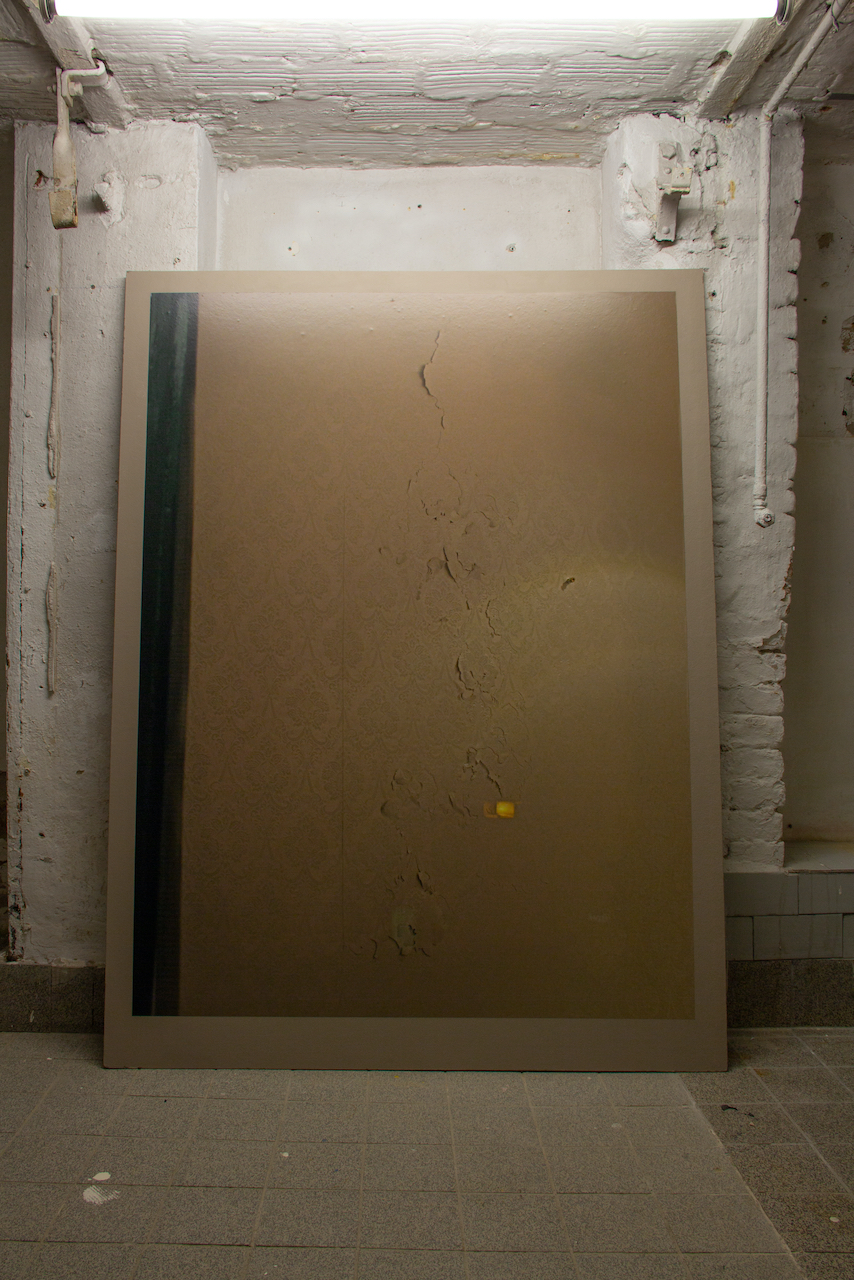Inverted Heels
Horse & Pony, Berlin
February 2 through March 1, 2020
Nate Heiges & Johanna Tiedtke
Performance by Wibke Tiarks 2/20
Horse & Pony, Berlin
February 2 through March 1, 2020
Nate Heiges & Johanna Tiedtke
Performance by Wibke Tiarks 2/20

Clip from “The Impostor Ocean,” 2020; single-channel video, 71 min, color & sound.
Full version viewable on VIMEO.
Email for password.
















PRESS RELEASE:
The dull sound of inverted heels, still dancing, echoes on the tiles. The heels have already transformed into a spatial element in a room in the basement. Having seated themselves in the corner, they owe us an explanation of how it feels to walk with inverted heels. Why did they choose the exact basement in which we danced in the past? Under blue light in the dust of a smoke machine.
The noise of broken glass interrupts our conversation and we take to our real heels to run upstairs. Luckily nobody got injured, but we find everyone between tears and broken pieces of glass. The frame structure holding the fragile glass work by one of the artists still hangs, but its contents are gone. Ironically this almost matches the main reference of the work: a wall in the garden. The garden is only accessible through the flat. It houses self-grown plants, a few dogs and birds and the backside of another backyard house. That house, or better, its backside wall, is about to be gone; or better, the relief that is still visible before the renovation will flatten it with an insulation wall. Last summer, the same wall started us on a journey into a rose garden from Berlin’s 1920s ... the wild years. Actually, we wanted to prove that the backyard of Horse & Pony used to be connected to Körnerpark via Luisenhöfe.
But in the middle of doing so, the other artist sends a text message asking if this text he already has (in the attachment) is enough for the application to the foundation. Somehow we have to get him across the ocean, and his work, too. We stand next to a corner of the front room. The corner makes a strange sound, as if trying to mimic our spoken language, and suddenly we feel absorbed. The corner invites us to squeeze ourselves into the joints between the crumbling sand of its old grout. It tries to press us into some sort of system. We get away through slices someone has cut into the wallpaper, which feels like taking a sweater off the arms of a statue. The color looks worn. How often can you re-use a color? Will it ever change its tone?
And then we hear again the dancing heels in the basement, but this time the sound feels slightly out of sync. As if it were a millisecond delayed or too fast, but as a mistake it shapes its own pattern. We like to listen and to look around, and see the others listening and looking around.
Then we step outside for a moment; it’s cold. Too many people on the street share not enough clothes, most of them hurry from one place to the next. Yelling seems to be a common language these days. Altenbraker street, after Altenbrak, a neighborhood of the town of Thale in the district of Harz in Saxony-Anhalt. The road leads from Thomasstraße to Siegfriedstraße. The house numbering on this street follows the principle of orientation numbering. The road was built at the end of the 19th century and was first called Bodestraße. Imagine! Bode Museum would be Horse & Pony and vice versa!
As we look through the lit windows of the gallery space, we see a backyard. There’s research on the backyards in Berlin being constructed as stages. They can render the actual environment remotely, catapulting us into an illusory reality that does not conceal its own constructedness. The works inside have crept up on the walls, in the corners of the rooms and in the window niches, patiently forming a setting for a performance that is yet to come.
-Marcel Dickhage & Cathleen Schuster
